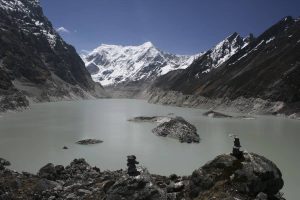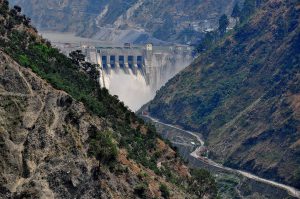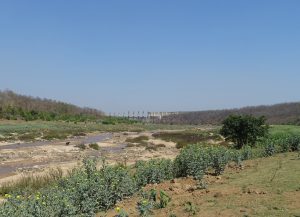Last year was the deadliest on record for the world’s defenders of the environment, according to new figures from NGO Global Witness. The organisation’s report said the murder rate for those opposing damaging infrastructure projects and resource extraction has risen to a shocking three per week. “The pattern of killings in many countries is becoming an epidemic,” Victoria Tauli-Corpuz, the UN’s special rapporteur for human rights said on a recent visit to Brazil, which the report lists as the most deadly country. A record annual toll of 185 murders of environmental activists was recorded across 67 different countries in 2015 with the highest concentration of killings in Latin America. The figure represents a 59% increase on the previous year. Brazil (50), the Philippines (33), Colombia (26), Peru (12) and Nicaragua (12), make up the top five most dangerous countries, says the report entitled On Dangerous Ground. However, the numbers are likely an underestimate of the true extent of the problem, given the suppression of monitoring efforts by civil society groups and the media in some countries. Around 40% of killings (67) were of indigenous people who live in remote locations rich in natural resources but where law enforcement is weak, with the consequence that illegal logging and mining are rife. Impunity prevails for the perpetrators of violence while activists are increasingly criminalised or demonised as “anti-development” by influential elites, the report says. The murder in March of high-profile Honduran activist and 2015 Goldman Environmental Prize winner Berta Caceres, who was shot as she slept, reminded the world of the risks facing those who protect natural resources from exploitation. Caceres opposed the construction of the Agua Zarca dam on the Gualcarque river, on which indigenous Lenca depend and consider sacred. After mining, hydropower is cited by the report as one of the principal causes of environmental conflict. In neighbouring Nicaragua, indigenous Miskito find themselves at the forefront of a bloody territorial dispute. According to Lottie Cunningham, a Miskito lawyer, 24 people have been killed and over 50 seriously wounded by settlers in the North Caribbean Coast Autonomous Region (RAAN) since 2014. This is despite the Inter-American Court of Human Rights (IACHR) repeatedly urging the Nicaraguan government to do more to protect them. Global Witness was able to verify 12 environment-related murders in Nicaragua in 2015, all whom were indigenous. “Our communities need our work more than ever – and we are committed to it – but we’re in a constant state of danger and alarm,” Cunningham said. She added that the Nicaraguan government has failed to put into practice laws guaranteeing their territorial rights and continues to grant concessions for projects on indigenous land and with no prior consultation on the impacts. The report calls on national governments, companies and investors and international organisations to take immediate steps to better protect environmental activists. Among the recommendations are proper law enforcement by local authorities, and the ratification of International Labour Organisation (ILO) convention 169, which enshrines the rights of indigenous people to free, prior and informed consent on projects affecting their land. Investors are urged to refuse investment decisions unless ILO convention 169 has been respected. Amazon agony Apart from 2011, more environmental activists have been killed in Brazil each year since 2002 than in any other country. There have been some 500 murders of Brazilian activists during this period. The 50 killed in 2015 represent a near doubling on the previous year. Illegal logging and the expansion of the agricultural frontier are linked to a surge of violence in the Amazonian states of Pará, Maranhão and Rondônia, where the majority of killings took place. Many landowners reportedly hire hitmen to silence those who oppose their interests. The UN’s Tauli-Corpuz described the situation as “open warfare”. Brazil’s congress is debating a long-existing proposal to amend the constitution known as PEC 215, which would transfer authority for the demarcation of indigenous territories from the executive to the agribusiness-friendly legislature. If passed, PEC 215 could open up indigenous land to cattle ranching and soya farming, as well as oil and gas projects, proving fatal for its inhabitants. In Florencia in the department of Caquetá in the Colombian Amazon, violent conflicts have erupted over oil extraction with the local church, businesses and NGOs forming an unlikely alliance in defence of the area’s fragile ecosystems. “The exploitation of hydrocarbons is only temporary, the Amazon is forever,” Eduardo Moya, head of the local chamber of commerce, told Diálogo Chino in an interview last year. On the fringes of the Amazon basin, in central Colombia, activists face constant threats and intimidation from paramilitary groups operating on behalf of local businesses, the Global Witness report said. Multinational mining corporations are also drawn to the area by its vast gold deposits. Already suffering from years of ongoing civil conflict, indigenous groups such as the Embera Chamí now face displacement from big agribusiness and extractive industries which exacerbate land inequality, poverty and environmental degradation, the report says. Land grabs and commercial exploitation are commonplace, and are even legitimised by a 2015 law encouraging the economic development of certain areas irrespective of whether they have been appropriated illegally, according to Amnesty International. Warnings On accepting her Goldman prize, Berta Caceres spoke of repeated harassment and death threats: “They follow me. They threaten to kill me, including kidnapping me. They threaten my family. This is what we face.” Despite her warnings, the Honduran government did little to protect her. Yet just two weeks after her death, her colleague Nelson Garcia was also murdered. Only then did Dutch and Finnish investors withdraw funding for the Agua Zarca dam. Chinese contractor Sinohydro backed out of the project in 2012 amid rising tensions. While Global Witness strongly urges greater protection and proper investigations into such violence – without which a culture of impunity is allowed to fester – it also blames the broader trend towards resource-based economic models in developing countries. The fall in global prices is only likely to intensify commodity-export oriented development, and by extension, the risks to the environment and its defenders. Contentious projects must be urgently reviewed and opponents encouraged to speak out with guarantees for their safety, the report says. Otherwise killings will only increase. “Any hope we have for future generations will also be killed,” the report warns.






